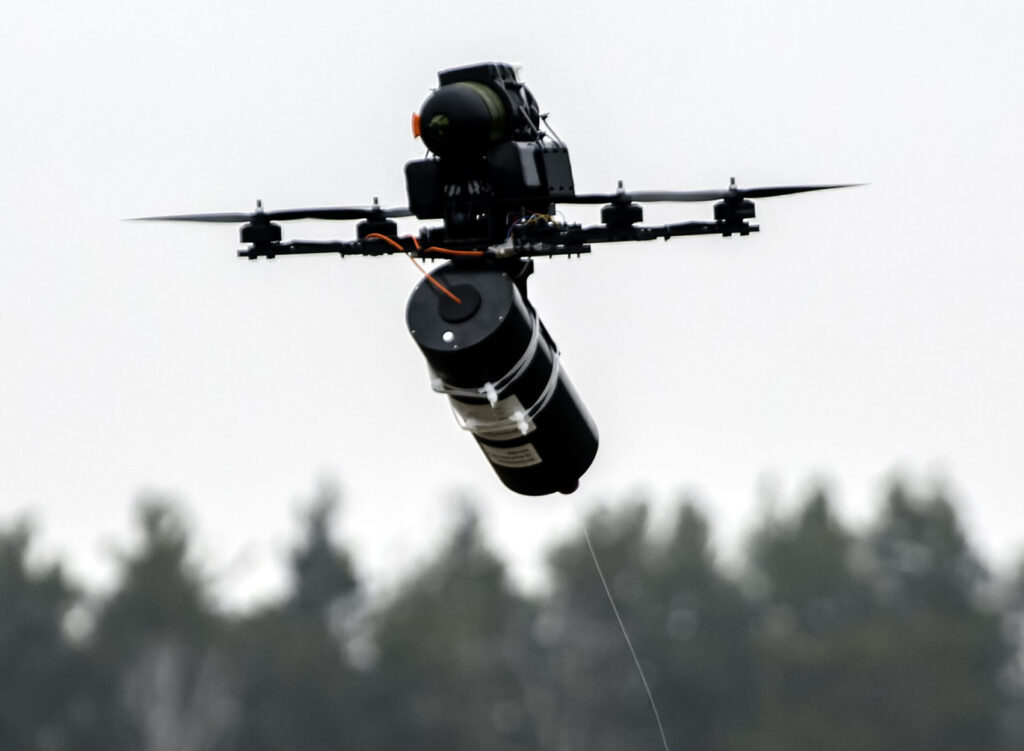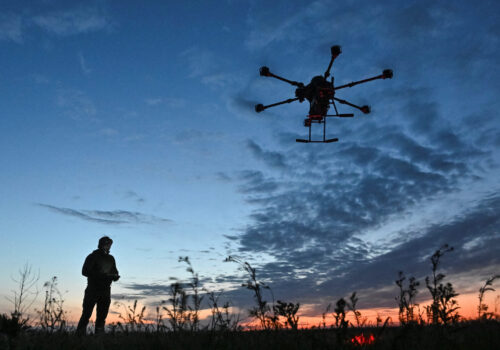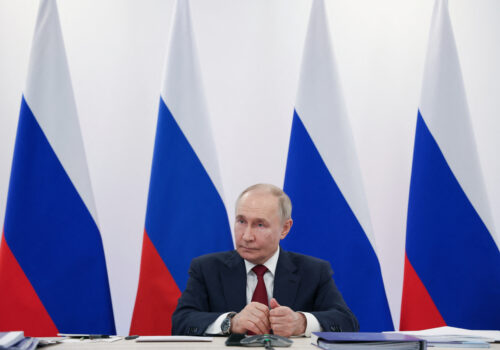Since the start of Russia’s full-scale invasion more than three years ago, the war in Ukraine has been shaped by a technological arms race as both countries have struggled to achieve an innovative edge on the battlefield. While Ukraine’s dynamic tech sector and less cumbersome bureaucracy initially gave it the advantage, Russia may now be gaining the upper hand.
The weapon that is turning the tide in Russia’s favor is the rather humble-looking fiber optic drone. This variation on the first-person view (FPV) drones that have dominated the skies above the battlefield since 2022 may appear inconspicuous at first glance, but it is having a major impact on the front lines of the war and is expected to play a crucial role in Russia’s unfolding summer offensive.
As the name suggests, fiber optic drones are controlled by wire-thin cables linked to operators. Crucially, this makes them immune to the jamming systems that have become near-ubiquitous in the Russian and Ukrainian armies due to the rapid evolution of drone warfare. Thanks to their data-transporting cables, fiber optic drones benefit from improved video quality and can also operate at lower altitudes than their wireless counterparts, but it is their invulnerability to electronic jamming that makes them such a potentially game-changing weapon.
Stay updated
As the world watches the Russian invasion of Ukraine unfold, UkraineAlert delivers the best Atlantic Council expert insight and analysis on Ukraine twice a week directly to your inbox.
There are some drawbacks to this kind of drone. Key problems include limited range and a tendency to become entangled in obstacles such as trees and pylons. Nevertheless, there is mounting recognition on both sides of the front lines and among international military observers that fiber optic drones are now indispensable. In a recent report, the BBC called these drones “the terrifying new weapon changing the war in Ukraine.” Meanwhile, the Washington Post noted that Moscow’s focus on fiber optic drones represents “the first time Russia has surpassed Ukraine in front-line drone technology since the full-scale invasion in 2022.”
The combat effectiveness of fiber optic drones became increasingly apparent amid heavy fighting in Russia’s Kursk region during the early months of 2025. Russia’s campaign to push Ukrainian forces out of the Kursk region used large numbers of fiber optic drones to attack Ukraine’s flanks, cut supply lines, and cripple Ukrainian logistics. This eventually forced Ukrainian troops to retreat, ending an extended incursion into Russian territory that had been hugely embarrassing for Vladimir Putin. Ukrainian troops who fought in Kursk later reported that the only thing capable of stopping fiber optic drones was bad weather.
Eurasia Center events

The technology behind fiber optic drones is no secret and is available to Ukraine as well as Russia. However, as is so often the case, Moscow benefits from weight of numbers and is looking to exploit its strengths. While Ukraine has experimented with a wide variety of drones produced by hundreds of different startup-style defense companies, Russia has concentrated its vast resources on the mass production of a relatively small number of specific weapons categories including fiber optic drones and shahed kamikaze drones. Moscow’s strategy is to focus on volume with the goal of overwhelming Ukraine’s defenses. Russia has also benefited from close ties with China, which is a key drone producer and ranks among the world’s leading suppliers of fiber optic cables.
Ukraine’s front line military commanders and the country’s tech sector developers recognize the growing importance of fiber optic drones and are now rapidly increasing production. However, they are currently lagging far behind Russia and have much work to do before they can catch up. It is a race Ukraine cannot afford to lose. One of the country’s largest drone manufacturers recently warned that if the current trajectory continues, Kyiv will soon be unable to defend against the sheer scale of Russia’s mass production.
Increased foreign investment in Ukraine’s defense industry could help close the gap. By financing the development and production of fiber optic drones, Ukraine’s international partners can put the country’s defenses on a firmer footing and enable the Ukrainian military to address the threat posed by Russia’s cable-connected drones. This trend has already been underway for some time, with more and more partner countries allocating funds for Ukrainian defense sector production. The challenge now is to channel this financing specifically toward fiber optic drones.
Time may not be on Ukraine’s side. The Russian army is currently in the early stages of a summer offensive that promises to be one of the largest and most ambitious of the entire war, with fighting already intensifying at various points along the front lines. If Putin’s commanders can implement the fiber optic drone tactics that proved so successful in the Kursk region, they may be able to finally overcome Ukraine’s dogged defenses and achieve a long-awaited breakthrough. In a war defined by attrition and innovation, Ukraine must now come up with urgent solutions to counter Russia’s fiber optic drone fleet.
David Kirichenko is an associate research fellow at the Henry Jackson Society.
Further reading
The views expressed in UkraineAlert are solely those of the authors and do not necessarily reflect the views of the Atlantic Council, its staff, or its supporters.

The Eurasia Center’s mission is to enhance transatlantic cooperation in promoting stability, democratic values, and prosperity in Eurasia, from Eastern Europe and Turkey in the West to the Caucasus, Russia, and Central Asia in the East.
Follow us on social media
and support our work
Image: A fiber-optic-controlled drone is designed for the Ukrainian Armed Forces in the Kyiv region, Ukraine, on January 29, 2025. (Photo by Maxym Marusenko/NurPhoto)





